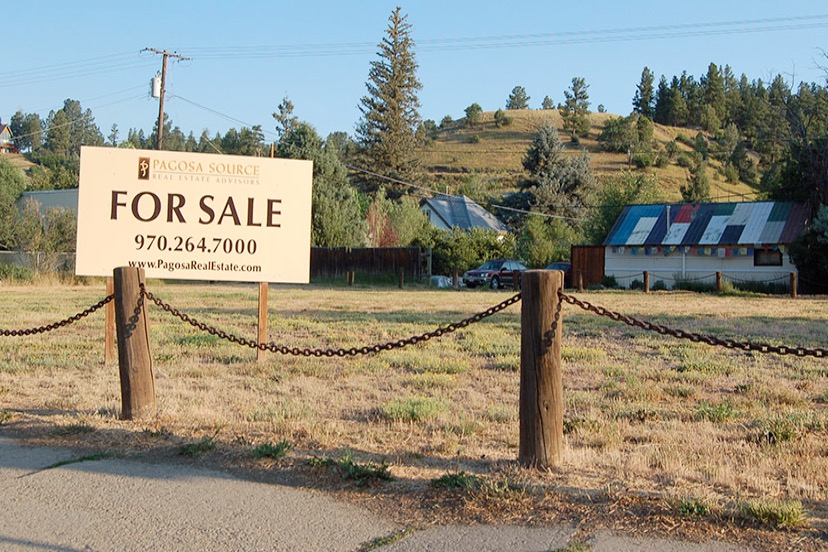If I know anything about Halloween in Pagosa, a large number of costumed children and their parents were prowling our downtown streets last night, knocking on doors and demanding candy.
Downtown is a preferred site for trick-or-treating because Pagosa Springs was designed from the very beginning to be a pedestrian-friendly town — as the result of being platted prior to the invention of the automobile, with modest, 1/6-acre lots.
The same cannot be said for the rest of Archuleta County, outside of the downtown core, where most of the population lives. Those rural subdivisions were designed to be automobile-centric.
When I finished writing my most recent editorial series, yesterday, I offered my conclusion that the future of water supplies in Archuleta County is looking bright… what with the enlargement of the Snowball Treatment Plant that will triple its capacity, and ongoing discussions that could potentially triple the amount of water available from our primary reservoir, Lake Hatcher. These improvements to our water infrastructure are made possible by existing and future Pagosa Area Water and Sanitation District (PAWSD) customers, with financial help from the state of Colorado and the federal government.
One implication of these improvements is that PAWSD could conceivably serve three times as many people — residents and visitors — as they are serving now in 2024.
I suspect hardly anyone living in Pagosa would like to see three times as many visitors. Except perhaps a few business owners? The Springs Resort, maybe?
It’s also possible that most Pagosans are happy with the current full-time population, and would like Pagosa to stay the size it is, currently.
But here’s another question: Could Pagosa grow to three times its current size? I mean, is that even possible?
Are there physical limits to growth in Archuleta County? And are there logistical limits?
Back in 1970, the timber industry that had fueled the Archuleta County economy was on life support, and population growth had come to a standstill. Families who had arrived during the first half of the 20th century, to raise cattle and sheep and work the lumber mills, were able to eke out a living, barely.
But a couple of development companies arrived, aiming to attract American retirees looking for a beautiful recreation wonderland in which to spend their remaining years, and also disaffected big-city dwellers looking for a rural paradise.
To accommodate these newcomers, these development companies bought up some of the larger, more easily-developed ranches from struggling agricultural families. The development in Aspen Springs consisted of about 9 square miles; the Eaton development around Pagosa Lakes included about 21 square miles. Smaller subdivisions also came onboard: Loma Linda, San Juan River Village, Pinon Hills Ranch, Piedra Estates, Alpha Rock Ridge, and so on.
Over the years, the County government managed to approve about 300 subdivisions, and in most of those subdivisions, the best parcels were gradually purchased, leaving the less-attractive parcels for future buyers. Home construction proceeded slowly at first, and then exploded during the 1990s, with up to 500 new homes added per year.
As the rate of development increased, local governments came to the realization that they were going to be maintaining the community’s expanding infrastructure long, long into the future — long after the developers had taken their profits and left. So gradually, stricter development standards were approved.
For subdivisions.
But developers quickly realized that they could sell 35-acre parcels (or larger) and avoid subdivision regulations. These larger parcels were generally located farther from the downtown core, and appealed to wealthier buyers.
At this point in Pagosa’s history, many of the most attractive and most affordable ranch properties have already been purchased — either for subdivisions, or for 35-acre ranchettes, or as larger ranches owned by millionaires. I understand it’s become relatively challenging to find a large ranch property for sale.
Farming and ranching has always been a labor-intensive way to make a living, and from what I can tell, most of the ranches that haven’t already been chopped up into quarter-acre, or one-acre, or 35-acre developments have been purchased as trophy ranches by wealthy retirees or business owners. Those trophy ranches generally have generous — and senior — water rights left over from the earliest days of Archuleta County’s agricultural past.
Within PAWSD subdivisions, the owner of a vacant parcel has to pay an “availability fee” if the parcel is within 100 feet of a water line. This fee helps fund the maintenance of the water system, so it’s ready to serve the property owner when they get around to building their home. (The Aspen Springs subdivision, meanwhile, has no central water system.)
13 years ago, when the Water Supply Community Work Group was researching water infrastructure needs in Archuleta County, a realtor told me that about half of the parcels in the Pagosa Lakes subdivisions had been built out — meaning that half remained vacant. Since then, numerous new homes have been built… and numerous property owners have purchased and consolidated the parcel next door, to prevent anyone from buying it and building a home there.
According to recent PAWSD data, our primary water district now has 6,484 water customers.
Additionally, PAWSD collects “availability fees” from 2,170 property owners.
This suggests that, as of 2024, exactly three-quarters of the parcels in the PAWSD district have been built out, and one-quarter remain vacant.
If that same percentage applies to the rest of Archuleta County — and that’s a big “if” — then we might guess that our town and suburban subdivisions are mostly built out. Without the approval of additional subdivisions, and assuming current trends in property ownership, Pagosa Springs could grow by, at most, about 4,500 people.
How likely is it, that new subdivisions are going to appear on the Archuleta County landscape?
In the foreseeable future?

